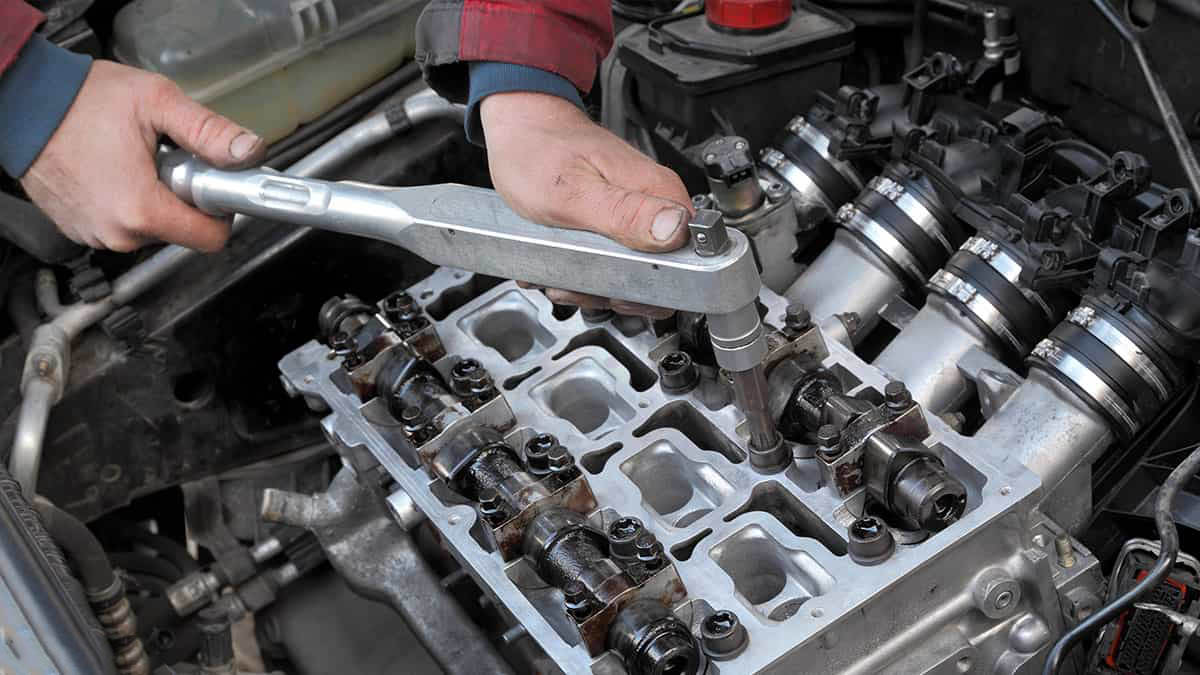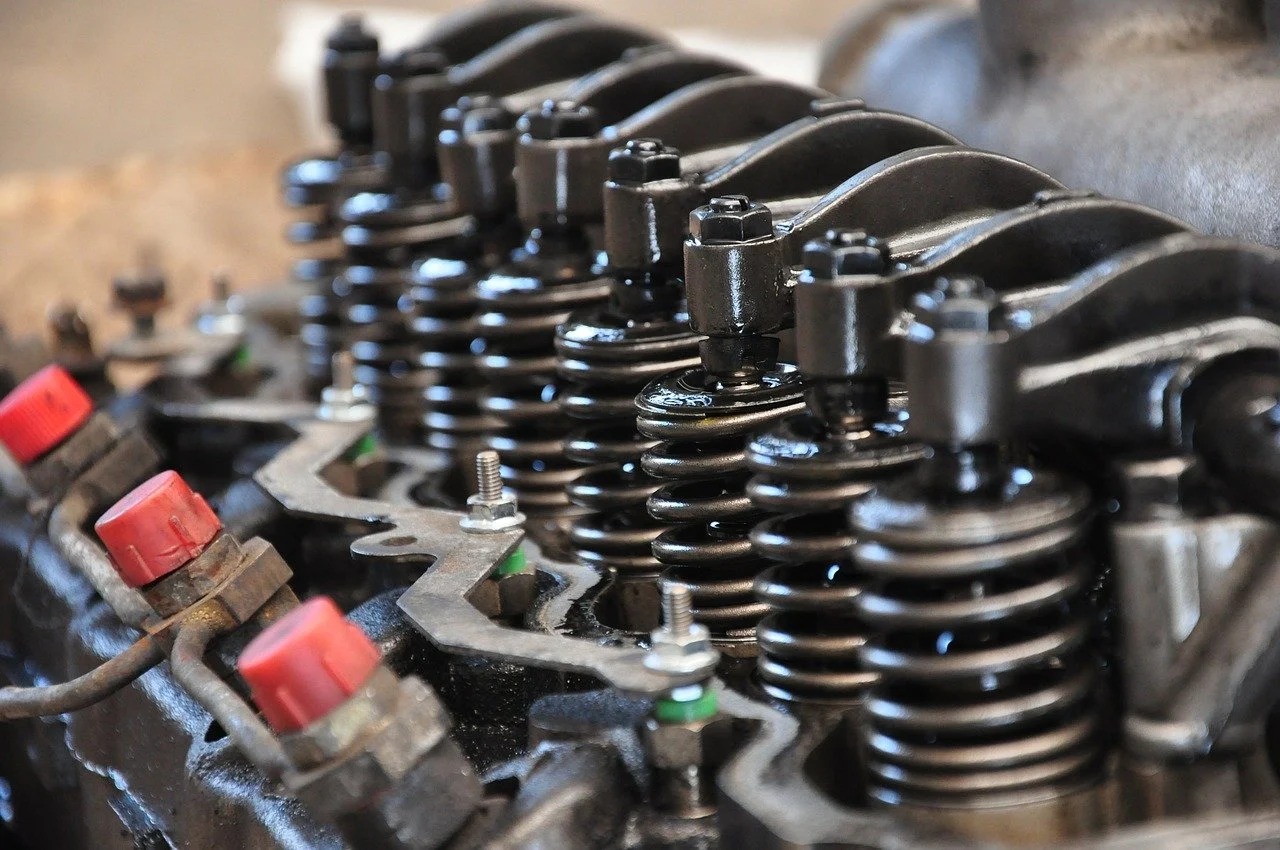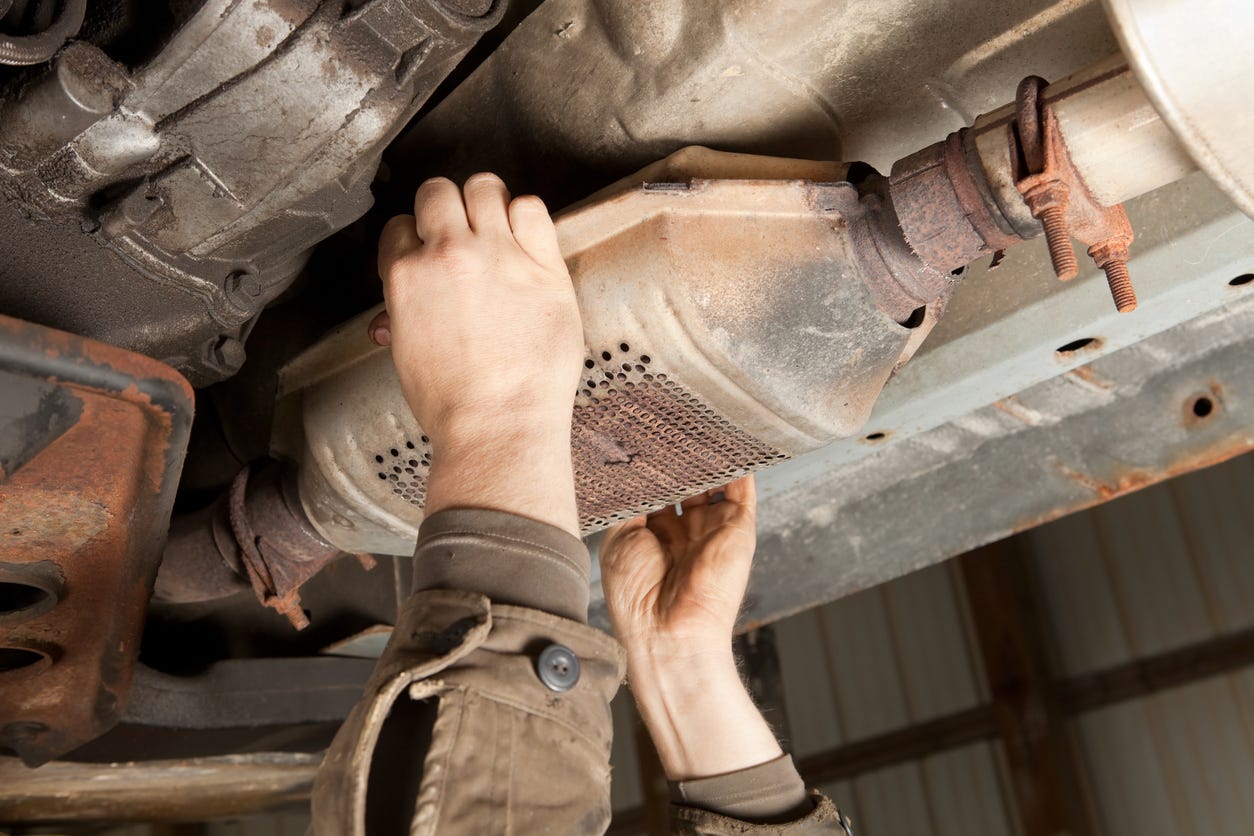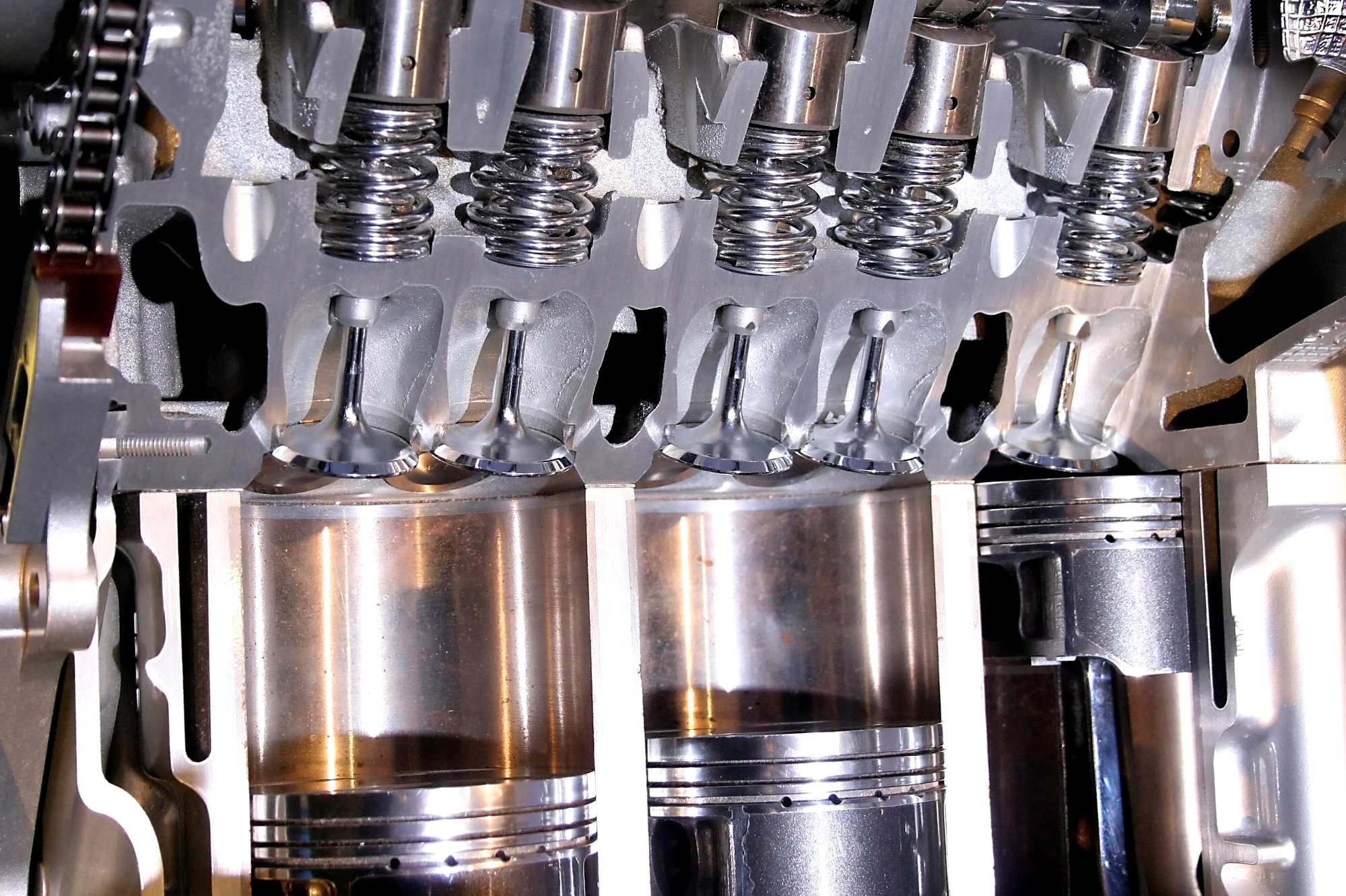Home>Automotive>The Ultimate Guide To Fixing Lifter Tick


Automotive
The Ultimate Guide To Fixing Lifter Tick
Published: January 5, 2024
Discover the ultimate guide to fixing lifter tick in automotive engines. Learn effective tips and techniques to eliminate lifter noise and improve engine performance.
(Many of the links in this article redirect to a specific reviewed product. Your purchase of these products through affiliate links helps to generate commission for Noodls.com, at no extra cost. Learn more)
Table of Contents
Introduction
Lifter tick is a common issue that many car owners encounter, and it can be quite bothersome. The distinctive tapping or clicking sound emanating from the engine can be a cause for concern, prompting car owners to seek effective solutions. Understanding the underlying causes of lifter tick and learning how to address it is crucial for maintaining the optimal performance and longevity of your vehicle.
Lifter tick, also known as lifter noise, is a repetitive tapping or clicking noise that originates from the engine's valvetrain. This sound is often more noticeable during cold starts or when the engine is under load. The lifter, also referred to as a tappet, is a small, cylindrical component located within the engine block. Its primary function is to transfer the rotational motion of the camshaft to the linear motion of the valves. When the lifter fails to operate smoothly, it can result in the distinctive tapping noise that is characteristic of lifter tick.
In this comprehensive guide, we will delve into the intricacies of lifter tick, exploring its causes, symptoms, and effective methods for remedying this issue. By gaining a deeper understanding of lifter tick and its impact on your vehicle, you will be better equipped to tackle this common problem with confidence. Whether you are a seasoned automotive enthusiast or a novice car owner, this guide will equip you with the knowledge and strategies needed to address lifter tick and maintain the optimal performance of your vehicle.
Understanding Lifter Tick
Lifter tick, also known as lifter noise, is a prevalent issue that occurs within the valvetrain of an engine. The valvetrain is an essential component responsible for the operation of the intake and exhaust valves, which play a crucial role in the engine's combustion process. Within the valvetrain, lifters, or tappets, are small cylindrical components that facilitate the transfer of motion from the camshaft to the valves. When the engine is running, the camshaft rotates, causing the lifters to move up and down, thereby opening and closing the valves at the appropriate times.
Lifter tick is characterized by a distinct tapping or clicking sound that originates from the engine. This noise is often more prominent during cold starts or when the engine is under load. The lifter tick sound is a result of irregularities in the movement of the lifters, which can lead to an audible tapping noise that disrupts the smooth operation of the engine.
The lifter tick phenomenon can be attributed to various factors, including wear and tear, inadequate lubrication, or the accumulation of debris within the engine. Over time, the constant movement and friction within the valvetrain can cause the lifters to wear down, leading to diminished performance and the onset of lifter tick. Additionally, insufficient lubrication or the presence of contaminants within the engine can exacerbate this issue, further compromising the functionality of the lifters and contributing to the development of lifter tick.
Understanding lifter tick is essential for car owners, as it enables them to recognize the distinct sound associated with this issue and take appropriate measures to address it. By gaining insight into the underlying mechanisms of lifter tick and its impact on the engine, car owners can effectively diagnose and resolve this common problem, thereby ensuring the smooth operation and longevity of their vehicles.
Lifter tick is a prevalent issue that can affect the performance and longevity of an engine. By comprehending the intricacies of lifter tick, car owners can proactively address this issue and maintain the optimal functionality of their vehicles.
Causes of Lifter Tick
Lifter tick, a persistent tapping or clicking noise originating from the engine's valvetrain, can be attributed to several underlying causes. Understanding these factors is crucial for effectively addressing and remedying the issue. The following are common causes of lifter tick:
-
Wear and Tear: Over time, the constant movement and friction within the valvetrain can lead to wear and tear on the lifters. This wear can result from the accumulation of mileage and the natural degradation of engine components. As the lifters wear down, they may no longer function smoothly, leading to the development of lifter tick.
-
Inadequate Lubrication: Proper lubrication is essential for ensuring the smooth operation of the engine components, including the lifters. Inadequate lubrication can result from low oil levels, degraded oil, or a malfunctioning oil pump. Without sufficient lubrication, the lifters may experience increased friction and wear, ultimately contributing to lifter tick.
-
Contaminants and Debris: The presence of contaminants and debris within the engine can interfere with the proper functioning of the lifters, leading to lifter tick. Contaminants such as dirt, sludge, or metal particles can impede the movement of the lifters and cause irregularities that manifest as the characteristic tapping noise.
-
Valve Train Misalignment: Misalignment within the valve train, including the camshaft, pushrods, and rockers, can result in undue stress on the lifters, leading to irregular movement and the onset of lifter tick. Misalignment can occur due to various factors, including improper installation, component wear, or engine modifications.
-
Lifter Pump-Up: Lifter pump-up occurs when the lifter becomes over-pressurized, leading to a loss of clearance and preventing the valves from fully closing. This phenomenon can result from excessive engine speed, aggressive camshaft profiles, or inadequate clearance settings, ultimately causing lifter tick.
By understanding the diverse causes of lifter tick, car owners can effectively diagnose and address this issue, thereby preserving the optimal performance and longevity of their vehicles. Identifying the specific cause of lifter tick is essential for implementing targeted solutions and preventing the recurrence of this common problem.
Symptoms of Lifter Tick
Identifying the symptoms associated with lifter tick is essential for car owners to promptly address this issue and prevent potential damage to the engine. The following are common symptoms that indicate the presence of lifter tick:
-
Audible Tapping or Clicking Noise: One of the most prominent symptoms of lifter tick is the distinct tapping or clicking noise emanating from the engine. This sound is often more noticeable during cold starts or when the engine is under load. The rhythmic nature of the tapping noise is characteristic of lifter tick and serves as a clear indicator of this issue.
-
Increased Noise During Acceleration: As the engine workload intensifies during acceleration, the tapping or clicking noise associated with lifter tick may become more pronounced. This heightened noise level during acceleration is a key symptom that warrants attention and diagnostic evaluation.
-
Noise Persistence: Lifter tick noise tends to persist even after the engine has reached operating temperature. Unlike certain transient engine noises that diminish as the engine warms up, lifter tick remains consistent, signaling an ongoing issue within the valvetrain.
-
Reduced Engine Performance: In some cases, lifter tick may be accompanied by a reduction in engine performance. This can manifest as decreased power output, rough idling, or diminished overall engine efficiency. These performance-related symptoms may indicate the impact of lifter tick on the engine's functionality.
-
Check Engine Light Activation: In more severe cases, lifter tick may trigger the activation of the vehicle's check engine light. This occurs when the engine's sensors detect irregularities in performance or emissions, prompting the illumination of the check engine light as a warning indicator.
By recognizing these symptoms, car owners can promptly address lifter tick, thereby safeguarding the optimal performance and longevity of their vehicles. Understanding the distinctive symptoms associated with lifter tick empowers car owners to take proactive measures to diagnose and resolve this common issue, ensuring the smooth operation of their engines.
How to Fix Lifter Tick
Addressing lifter tick requires a systematic approach to effectively remedy this common issue. Car owners can employ various strategies and techniques to mitigate lifter tick and restore the optimal functionality of their engines. The following methods outline how to fix lifter tick:
-
Engine Flush: Performing an engine flush can help eliminate contaminants and debris that may be contributing to lifter tick. Using a high-quality engine flush solution, car owners can thoroughly clean the internal components of the engine, including the lifters and other valvetrain elements. This process helps remove sludge, varnish, and other deposits that can impede the smooth operation of the lifters, thereby reducing the likelihood of lifter tick.
-
Oil Change: Ensuring the engine is equipped with clean, high-quality oil is essential for mitigating lifter tick. Car owners should perform regular oil changes using the manufacturer-recommended oil grade and viscosity. Additionally, utilizing oil additives specifically designed to improve lubrication and reduce friction within the valvetrain can further aid in addressing lifter tick.
-
Lifter Adjustment: In some cases, adjusting the lifters to the manufacturer's specified clearance settings can help alleviate lifter tick. This adjustment may involve removing the valve covers and accessing the lifters to ensure proper clearance and smooth operation. Car owners should refer to the vehicle's service manual for detailed instructions on lifter adjustment procedures.
-
Lifter Replacement: If the lifters are excessively worn or damaged, replacing them with high-quality, OEM-equivalent components may be necessary to address lifter tick effectively. Car owners should enlist the expertise of a qualified mechanic to perform the lifter replacement procedure, ensuring that the new components are installed correctly and aligned with the manufacturer's specifications.
-
Professional Inspection: Seeking the expertise of a professional mechanic or automotive technician is advisable for diagnosing and addressing persistent lifter tick. A thorough inspection of the engine's valvetrain, including the lifters, camshaft, and related components, can provide valuable insights into the underlying causes of lifter tick and facilitate targeted remediation.
By implementing these methods, car owners can effectively address lifter tick and restore the smooth, quiet operation of their engines. Proactive maintenance and timely intervention are essential for mitigating lifter tick and preserving the optimal performance and longevity of vehicles.
Prevention of Lifter Tick
Preventing lifter tick is essential for preserving the optimal performance and longevity of your vehicle's engine. By implementing proactive measures and adhering to regular maintenance practices, car owners can mitigate the risk of lifter tick and ensure the smooth operation of their engines. The following preventive strategies are instrumental in averting the onset of lifter tick:
-
Routine Maintenance: Adhering to a comprehensive maintenance schedule is crucial for preventing lifter tick. Regular oil changes using high-quality oil and adhering to the manufacturer's recommended service intervals help maintain proper lubrication and minimize the accumulation of contaminants within the engine. Additionally, following the prescribed maintenance tasks outlined in the vehicle's service manual, such as inspecting and adjusting the valvetrain components, contributes to the prevention of lifter tick.
-
Quality Oil and Additives: Utilizing high-quality engine oil that meets the manufacturer's specifications is paramount for preventing lifter tick. Car owners should select oil with the appropriate viscosity and adhere to the recommended oil change intervals. Furthermore, incorporating oil additives designed to enhance lubrication and minimize friction within the valvetrain can further safeguard against lifter tick.
-
Engine Flush: Periodically performing an engine flush helps eliminate sludge, varnish, and other deposits that can compromise the functionality of the lifters and contribute to lifter tick. By thoroughly cleaning the internal components of the engine, an engine flush reduces the risk of lifter tick and promotes the smooth operation of the valvetrain.
-
Proper Operation: Employing proper driving habits and engine operation practices can contribute to the prevention of lifter tick. Avoiding aggressive driving maneuvers and adhering to recommended warm-up procedures during cold starts help minimize undue stress on the engine components, including the lifters. Additionally, ensuring the engine operates within the specified RPM range and avoiding prolonged high-speed driving can mitigate the risk of lifter tick.
-
Professional Inspection: Regularly seeking the expertise of a qualified mechanic or automotive technician for comprehensive engine inspections can aid in the early detection and prevention of lifter tick. Professional inspections enable the timely identification of potential issues within the valvetrain, allowing for proactive intervention and preventive maintenance measures to be implemented.
By integrating these preventive strategies into your vehicle maintenance regimen, you can effectively mitigate the risk of lifter tick and uphold the optimal functionality of your engine. Proactive maintenance and adherence to preventive measures are instrumental in preserving the smooth, quiet operation of the valvetrain and mitigating the onset of lifter tick.
Conclusion
In conclusion, understanding and addressing lifter tick is paramount for ensuring the optimal performance and longevity of your vehicle's engine. This comprehensive guide has provided valuable insights into the intricacies of lifter tick, including its causes, symptoms, and effective methods for remediation. By recognizing the distinct tapping or clicking noise associated with lifter tick and familiarizing yourself with the preventive strategies and maintenance practices outlined in this guide, you are equipped to proactively address this common issue and preserve the smooth, quiet operation of your engine.
Lifter tick, characterized by its rhythmic tapping or clicking sound originating from the valvetrain, can be attributed to various factors, including wear and tear, inadequate lubrication, contaminants, valve train misalignment, and lifter pump-up. Recognizing the symptoms of lifter tick, such as audible tapping noise, increased noise during acceleration, and reduced engine performance, empowers car owners to promptly address this issue and prevent potential damage to the engine.
The effective methods for fixing lifter tick, including engine flush, oil change, lifter adjustment, lifter replacement, and professional inspection, offer practical approaches to mitigating lifter tick and restoring the optimal functionality of the engine. By implementing these methods and seeking the expertise of qualified mechanics when necessary, car owners can address lifter tick with confidence, ensuring the smooth operation of their vehicles.
Furthermore, the preventive strategies outlined in this guide, such as routine maintenance, utilization of quality oil and additives, engine flush, proper operation, and professional inspection, serve as proactive measures to prevent the onset of lifter tick. By integrating these preventive strategies into your vehicle maintenance regimen, you can effectively mitigate the risk of lifter tick and uphold the optimal functionality of your engine.
In essence, this guide equips car owners with the knowledge and strategies needed to navigate the complexities of lifter tick, empowering them to proactively address this common issue and maintain the smooth, quiet operation of their engines. By fostering a proactive approach to maintenance and intervention, car owners can safeguard the longevity and performance of their vehicles, ensuring a reliable and enjoyable driving experience for years to come.














